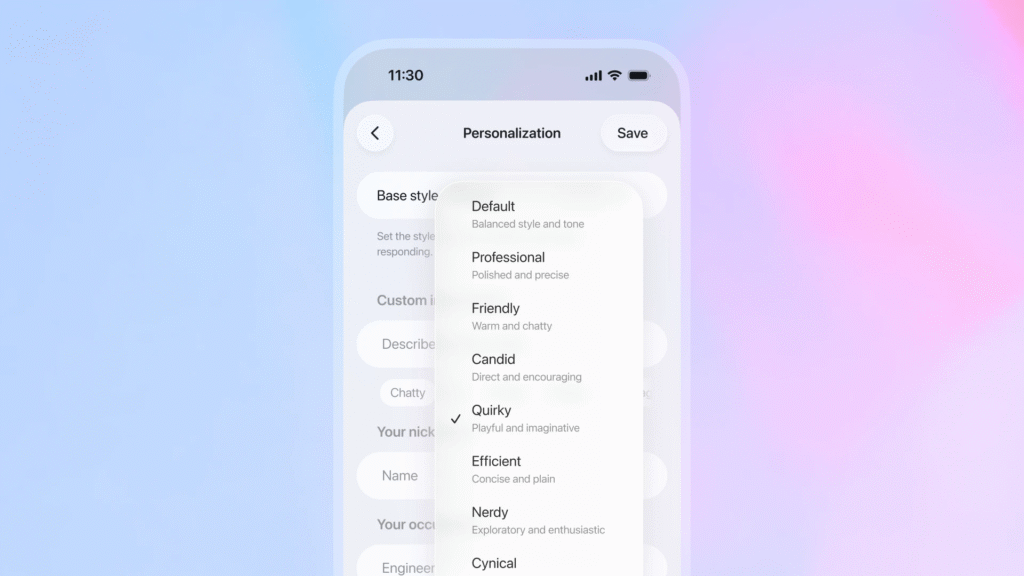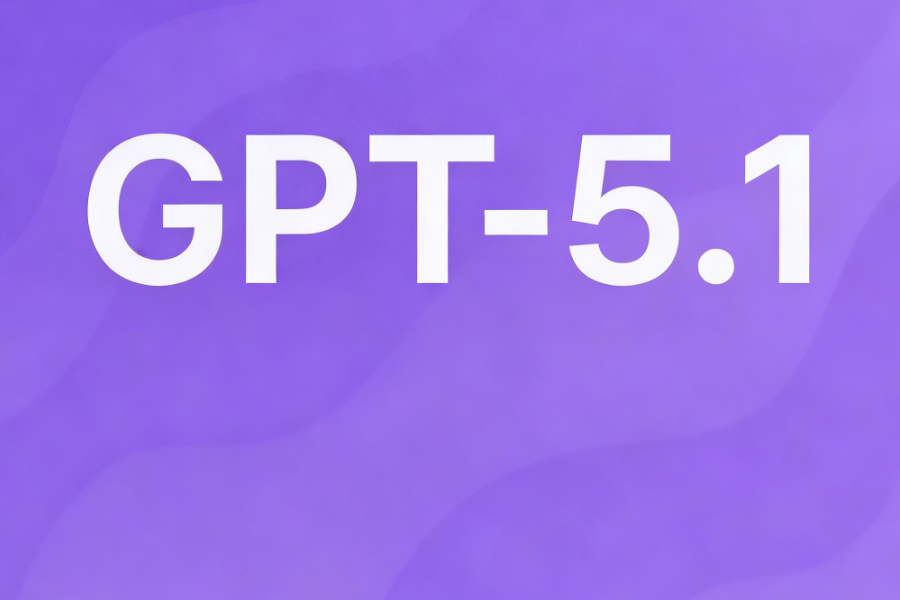OpenAI has commenced the phased rollout of GPT-5.1, the latest iteration of its large language models, to ChatGPT users, starting with its paid subscribers.
This significant update promises enhanced performance, greater adaptability, and a more personalized interaction style, marking another step in OpenAI’s mission to refine AI assistants for everyday use.
What’s New in GPT-5.1
The GPT-5.1 release introduces notable advancements across its model variants, focusing on conversational quality, emotional intelligence, and adaptive reasoning.

GPT-5.1 Instant
The newest “GPT-5.1 Instant” model is engineered to deliver a warmer, more conversational experience compared to its predecessor. OpenAI emphasizes that this model provides more accurate answers and adheres more strictly to complex instructions. A prime example is its ability to precisely follow a user’s directive to respond using exactly six words, showcasing its improved instruction-following capabilities.
Furthermore, GPT-5.1 demonstrates a enhanced capacity for handling emotionally charged situations. The model is designed to perceive nuances of stress or uncertainty in a user’s dialogue and respond with greater empathy. This stride towards more human-like responses aligns with OpenAI’s strategic vision of positioning ChatGPT as a genuine personal assistant, potentially competing with the nuance of real-life conversations in the future.
GPT-5.1 Thinking
The GPT-5.1 Thinking model, specifically designed for demanding reasoning and technical tasks, has also received a major upgrade. The new version features an adaptive reasoning capability that adjusts the model’s “thinking” duration before responding. For straightforward queries, GPT-5.1 Thinking operates approximately twice as fast as previous versions, enabling quicker processing.
Conversely, when tackling more complex or difficult subjects, it allocates more time to delve deeper, resulting in responses with up to twice the level of detail, albeit at a slower speed. This flexibility aims to optimize the balance between speed and depth based on the task’s complexity.
Customization Options

OpenAI has significantly refined its approach to personalization, offering users more granular control over their AI’s personality and response style.
The company has updated its core personality presets to better reflect common user preferences. The main defaults—Default, Friendly (formerly Listener), and Efficient (formerly Robot)—have been refined. They are now joined by new options including Professional, Candid, and Quirky, providing a broader spectrum of interaction styles. All these presets are applicable across all GPT-5.1 models. The original Cynical and Nerdy options remain accessible within the same personalization menu.
Beyond these predefined presets, OpenAI is experimenting with advanced controls that allow users to fine-tune specific characteristics. From the personalization settings, users can adjust sliders for response conciseness, warmth, scannability, and even emoji frequency, enabling a highly tailored AI experience.
A key usability improvement is that all personalization changes now take effect immediately across all chats, including ongoing conversations. This addresses a previous limitation where such changes only applied to new conversations started after the adjustment.
Additionally, the updated GPT-5.1 models demonstrate a stronger adherence to custom instructions, granting users more precise and consistent control over the AI’s tone and overall behavior.
GPT-5.1 Rollout Timeline
OpenAI has outlined a clear rollout schedule for GPT-5.1. Both the GPT-5.1 Instant and GPT-5.1 Thinking models began their release on November 12th, initially available exclusively to paid subscribers (ChatGPT Plus, Team, and Enterprise). Free and logged-out users will gain access at a later stage.
Enterprise and Education customers are granted a seven-day early access toggle for GPT-5.1, which is disabled by default to allow for controlled testing. Following this early access period, GPT-5.1 will become the default model for these users.
To ensure a smooth transition, the previous GPT-5 models (both Instant and Thinking) will remain available in the legacy models dropdown menu for paid subscribers for a period of three months. This provides users and developers ample time to compare performance, adapt their workflows, and ensure compatibility.
Conclusion on GPT-5.1
The introduction of GPT-5.1 represents a meaningful evolution in user-facing AI technology, with the potential to reshape daily digital interactions. Its superior instruction-following ability translates to less time spent tweaking prompts and a significant reduction in outputs that miss the mark.
The adaptive reasoning feature of the GPT-5.1 Thinking model promises to streamline workflows by accelerating simple tasks while dedicating appropriate resources to complex work like technical explanations or in-depth data analysis, ultimately delivering more thoughtful and detailed results.
This combination of speed, precision, and personalization solidifies GPT-5.1 as a powerful tool for a wide range of professional and personal applications. As the rollout continues, it will be closely watched to see how these enhancements perform at scale and how they further integrate AI into the fabric of everyday tasks.



